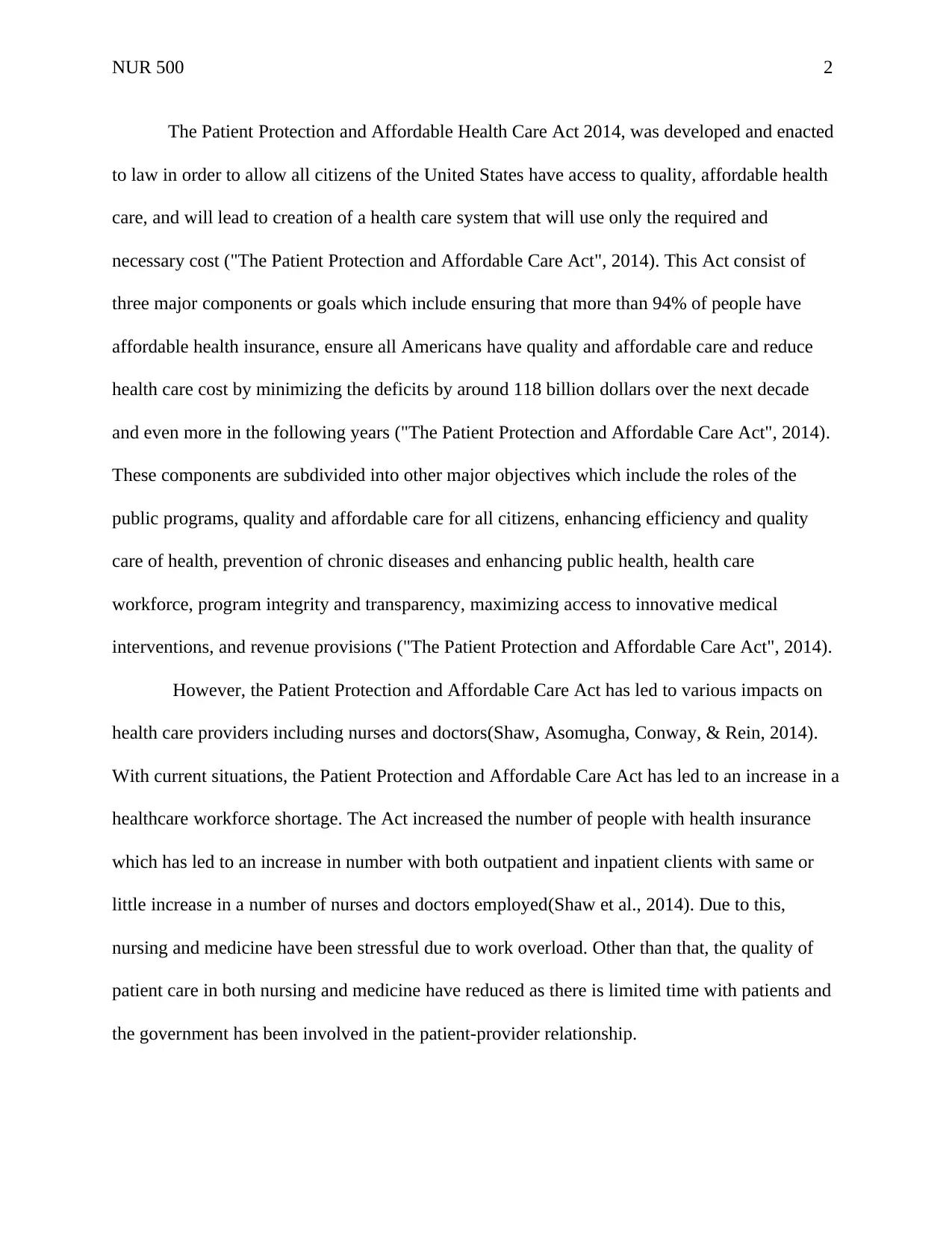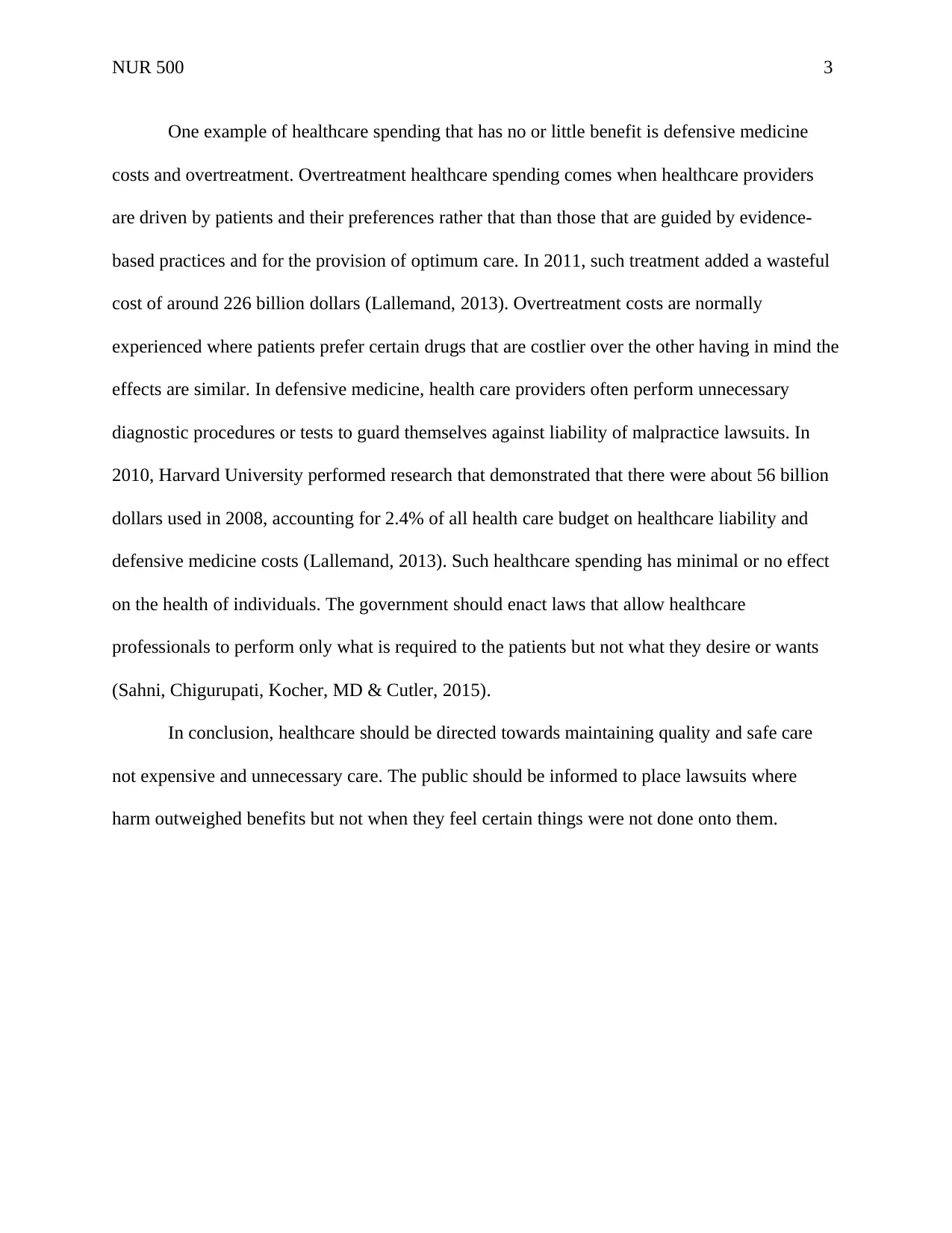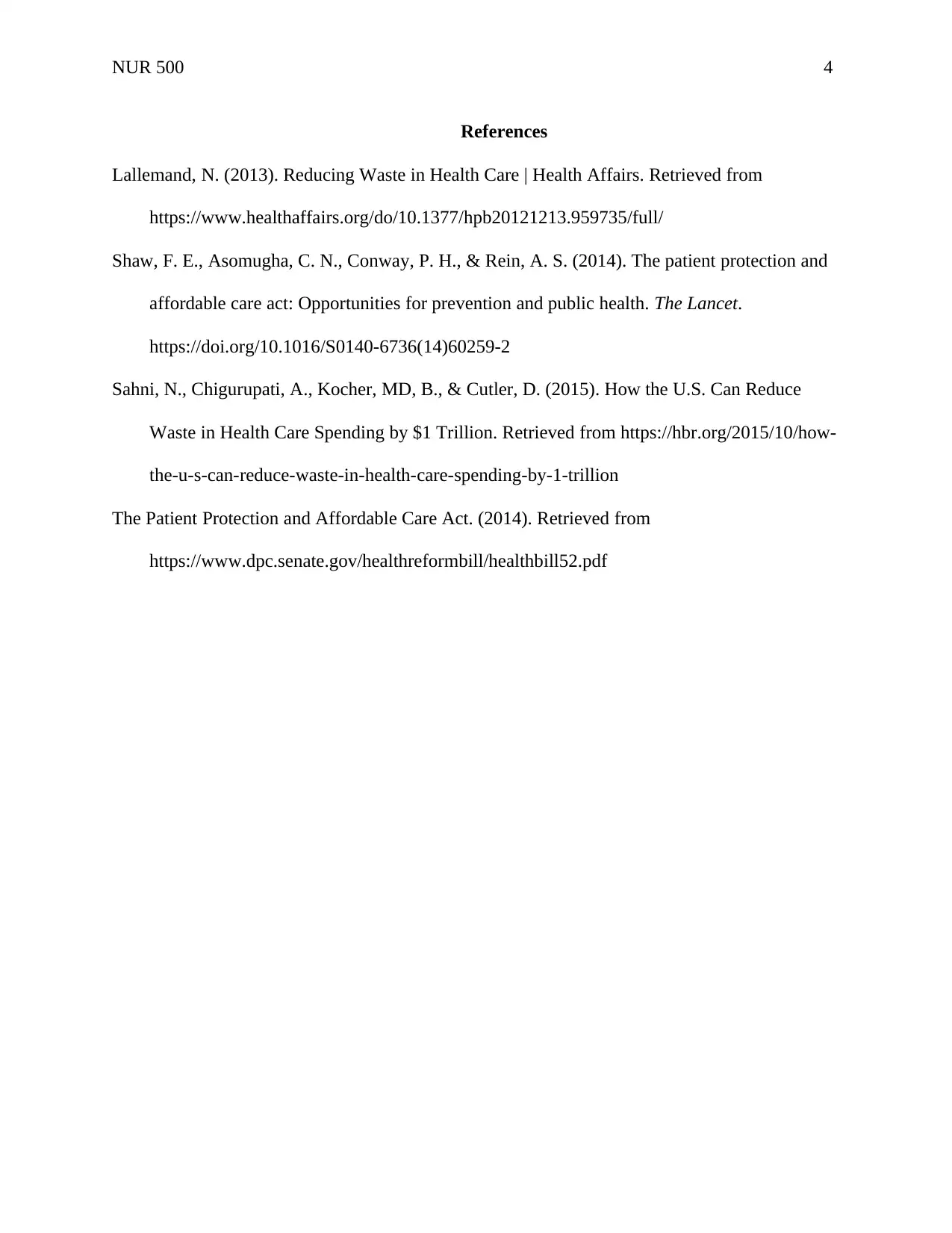NUR 500: The Affordable Care Act's Impact on Healthcare Providers
VerifiedAdded on 2022/10/18
|4
|765
|201
Essay
AI Summary
This essay analyzes the Patient Protection and Affordable Care Act (ACA), examining its impact on healthcare providers, including nurses and doctors. The ACA aimed to provide affordable healthcare to all US citizens, but it led to workforce shortages due to increased patient numbers with a limited increase in healthcare professionals. The essay discusses the increase in work overload, reduced quality of patient care, and government involvement in the patient-provider relationship. It highlights wasteful healthcare spending, such as defensive medicine and overtreatment, which adds significant costs without improving patient health. The author suggests enacting laws to ensure healthcare professionals focus on necessary care and informing the public about lawsuits when benefits are outweighed by harm, emphasizing the need for quality, safe, and cost-effective healthcare.
1 out of 4











![[object Object]](/_next/static/media/star-bottom.7253800d.svg)